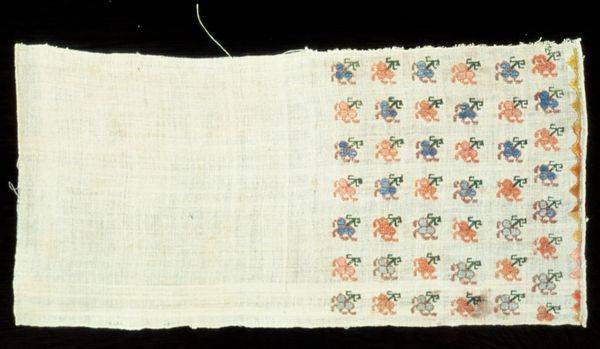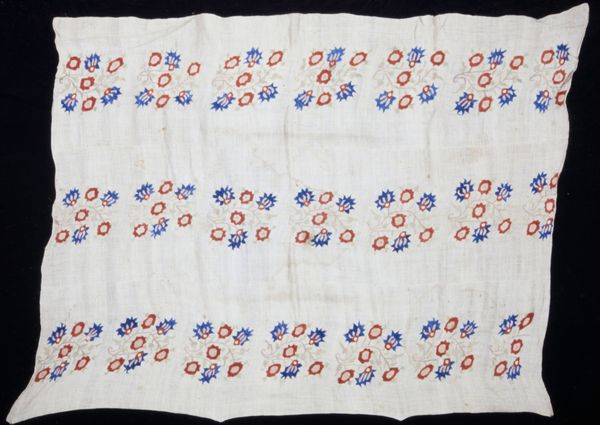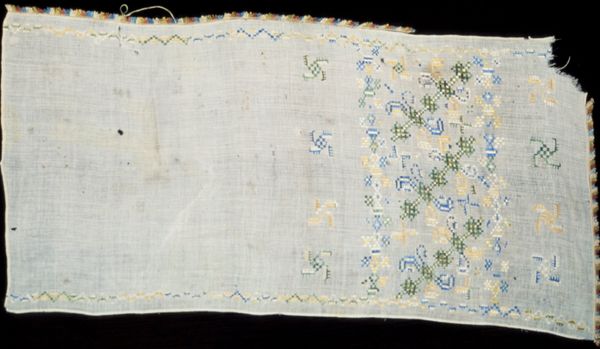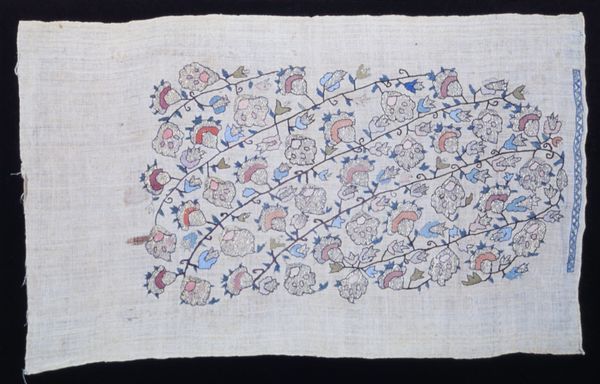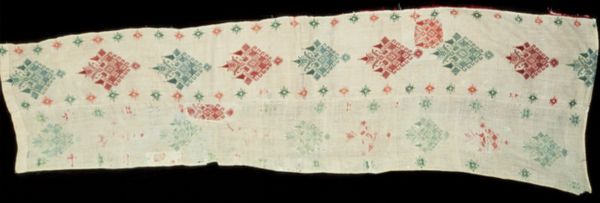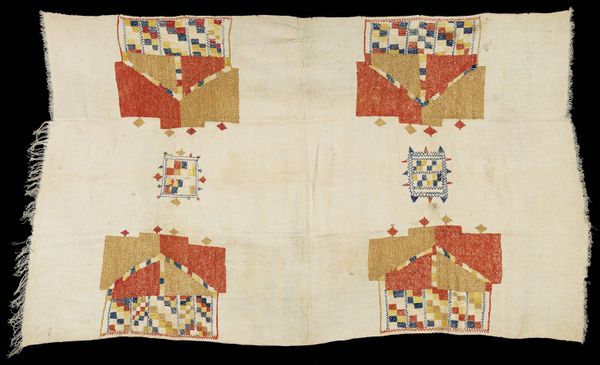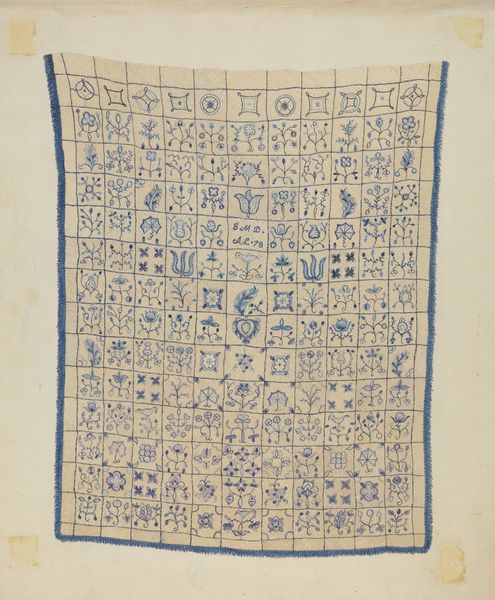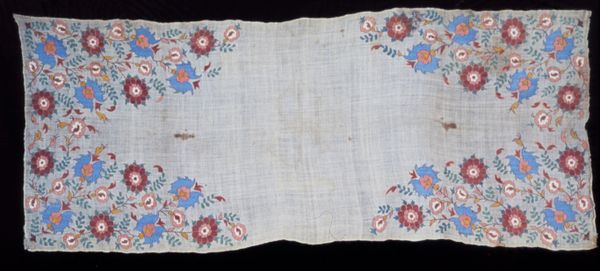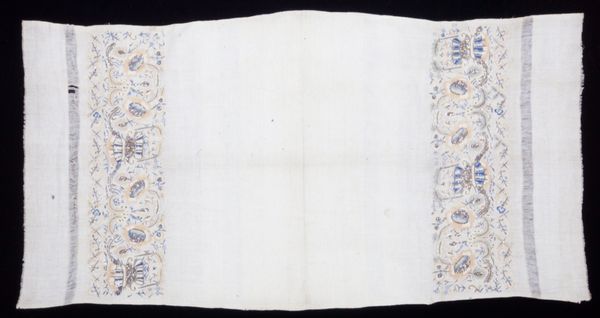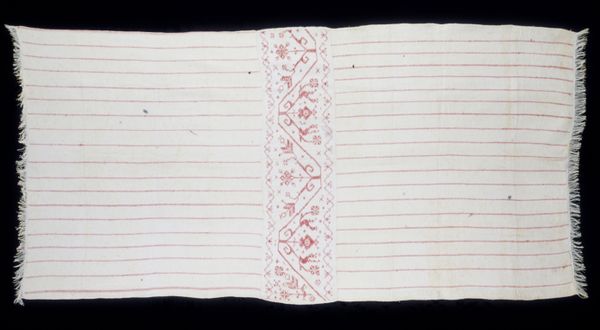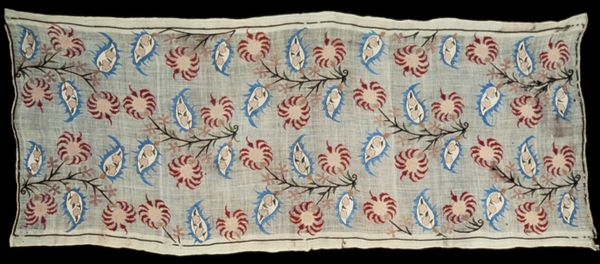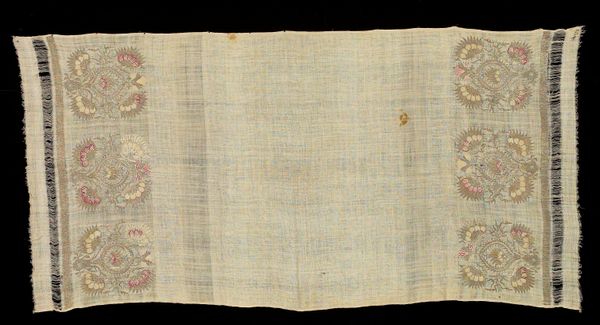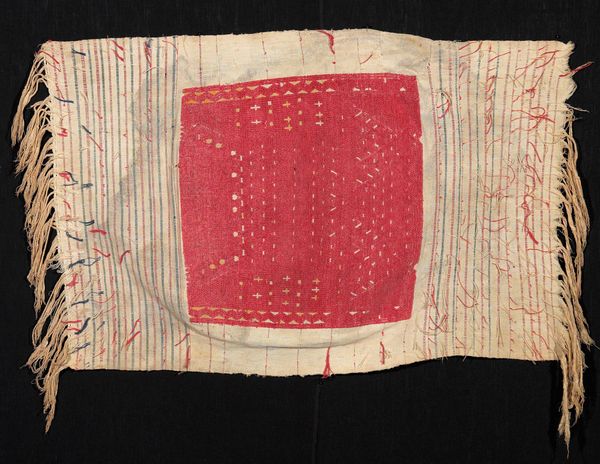
drawing, silk, textile, cotton
#
drawing
#
natural stone pattern
#
silk
#
pattern
#
textile
#
fashion and textile design
#
hand-embroidered
#
fabric design
#
repetition of pattern
#
regular pattern
#
pattern repetition
#
cotton
#
textile design
#
imprinted textile
#
layered pattern
Dimensions: 15 1/2 x 22 1/2 in. (39.37 x 57.2 cm)
Copyright: Public Domain
Curator: The Minneapolis Institute of Art houses a charming object known as "Towel end," dating from around the 19th century. It's crafted from cotton and silk. Editor: There's something quietly lovely about its simplicity, despite the intricate work in it. The embroidered corner really draws your eye in. Curator: Indeed. Looking at the embroidered patterns closely, the piece really speaks to me of domestic labor, and the artistic outlet it could provide for women, specifically. These weren’t passive consumers, but active participants in the creation of their material world. We have here not just a towel end, but evidence of production! Editor: Absolutely, and I find myself considering who this artisan was, where she might have learned her craft. Embroidery and textile work have always been intrinsically linked to women's roles and identities. Curator: The materiality further reflects how this towel was manufactured. Looking at the patterns we can consider where did they source this knowledge? The accessibility to the cotton and silk tells about trade routes of the 19th century. How were global connections enabling or constraining production? Editor: It certainly offers insight into that era. Perhaps there were restrictions of self-expression or challenges to the roles this creator might have played. Was this textile design something imposed upon her or something that was self sought after? Curator: It brings a special intimacy knowing these details are woven, or stitched, rather, into every piece and stitch of the material. It prompts me to also ask what did those making this, from sourcing the raw materials to distribution get compensated? Editor: Right. It allows a glimpse into the intersection of artistry, identity, and often, constraints experienced by individuals and marginalized communities, especially women, across time. Curator: Thinking about this piece allows for some quiet, contemplative study of not only the beautiful piece but it helps place emphasis and re-evaluate those whose labor helped manufacture society's basic objects. Editor: Ultimately, engaging with these textiles sparks vital conversations about history, labor, identity, and art. A simple “Towel end” connects to such bigger implications.
Comments
No comments
Be the first to comment and join the conversation on the ultimate creative platform.
